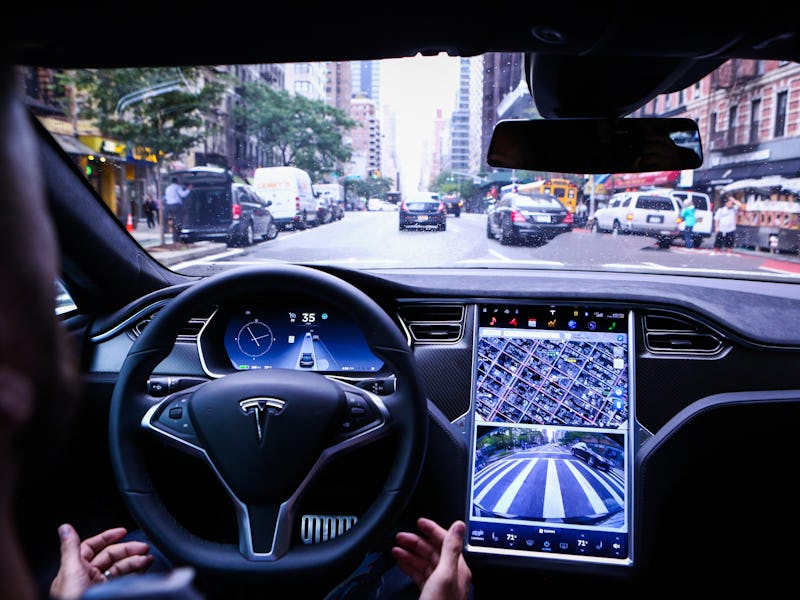Video shows Teslas will soon be able to autonomously stop at red lights
Semi-autonomous driving is about to advance, thanks to an upcoming software update.

Tesla Autopilot is about to get a whole lot smarter. This week, video footage showed the company's all-electric vehicles taking on new functionality, automatically stopping at red lights as it approaches an intersection.
The capability, demonstrated by a Twitter account called "Out of Spec Motoring," shows a Tesla Model 3 driving along a road in rainy conditions. Toward the end of the 55-second clip, the vehicle detects an upcoming red light and gradually slows to a stop.
It's a big step forward in CEO Elon Musk's plan to fully automate the driving process. Tesla's full self-driving package, a $7,000 software unlock, enables the car to drive itself under human supervision and in limited conditions. A "feature complete" version is expected to drive from point-to-point under supervision, with a long-term goal of removing the human oversight from the equation.
With this latest feature, seemingly included with early access versions of Tesla's software, the company looks set to take another step toward this ambitious goal.
First, a quick primer. All Tesla vehicles today include basic Autopilot functionality, which steers, accelerates and brakes within a given lane. An optional $7,000 extra dubbed "full self-driving" brings three key features:
- Summon, which moves the car around a parking lot to the owner and other slow-moving situations.
- Automatic parking.
- Automatic lane changes on the highway. The "Navigate on Autopilot" feature enhances this by exiting the highway at the correct exit, based on the final destination inputted into the GPS system.
The company's website names two features as in the works: automatic driving on city streets, and the ability to recognize and respond to traffic lights and stop signs. But the end goal, as Musk has explained before, is to keep updating and reach full autonomy.
Tesla's full self-driving system is based on selling cars with the necessary sensors, selling an optional upgrade package, and rolling out the system once it's developed. This project was unveiled in October 2016, and every vehicle made after that date shipped with a combination of cameras, ultrasonic sensors and GPS. Notably missing from the equation was the depth-sensing lidar used by the likes of Waymo, as Musk has regularly claimed solving the problem of computer vision is a better long-term goal.
Unfortunately, full self-driving has turned out to be tougher than expected for both Tesla and the broader industry. A coast-to-coast autonomous drive was promised for the end of 2017 but it never materialized. In October 2018, Musk admitted that it's “extremely difficult to achieve a general solution for self-driving that works well everywhere.”
In October 2019, Musk said that Tesla could roll out a "feature complete" full self-driving system by the end of 2019. He noted at the time that this was a "tight" deadline, and Tesla did indeed fail to roll out a complete system by that point.
Stopping at a red light may seem like a relatively straightforward task for a human, but by handing it over to the machine, it takes another step closer to full autonomy.
The Inverse analysis
Autonomous driving seems to have suffered from Amara's Law: the effects of technology are overestimated in the short term and underestimated in the long term. The completely autonomous car hasn't quite arrived and its usage is spotty, but it's meant that advancements in these early stages are overlooked due to high expectations.
Tesla's full self-driving car may remain outside the realm of possibility for the foreseeable future, but drivers will soon be able to add stop lights to the list of tasks where a computer can assist.